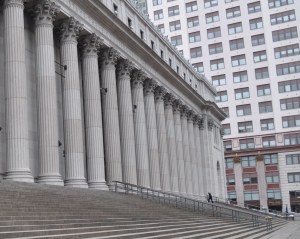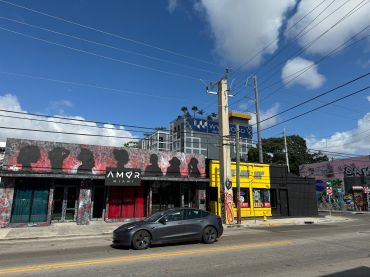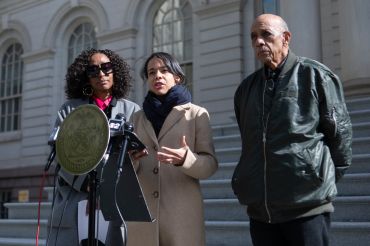
In late January, a collection of civic groups pushing for the expansion of Penn Station across the street into the Farley Post Office met with Lieutenant Governor Richard Ravitch’s chief of staff, Michael Evans. The topic was a status report on the long-stalled project-in the works for nearly two decades with little forward progress-and an update on its crucial application for federal stimulus money. With regard to the latter, Mr. Evans had a plea, according to multiple attendees: If anyone had connections to White House Chief of Staff Rahm Emanuel, this was a really good time to put in a call.
“We needed people who could pick up the phone to get to him,” an attendee said.
With a push by the Paterson administration and elected officials, particularly Senator Chuck Schumer, the effort was an apparent success: The Obama administration was slated to announce on Wednesday an award of $83 million in stimulus funding for the project, according to Mr. Schumer. The money is a big lift for the project-known as Moynihan Station in honor of major backer Daniel Patrick Moynihan-and had the state lost its bid for the funding, officials involved feared it would kill the dreams for an expanded station, at least for the foreseeable future. But with the money now coming, it clears the path for something that has never occurred in its tortuous history: construction.
Advocates, from the Municipal Art Society to the Regional Plan Association, were thrilled, viewing the stimulus money as a move that will bring the project back to life, particularly in the minds of the public. “This will recapture the public imagination,” said Peg Breen, president of the New York Landmarks Conservancy.
First proposed by Amtrak and the U.S. Postal Service in the early 1990s, the conversion of the Corinthian column-lined Farley building into a train hall designed by Skidmore Owings Merrill has been a seductive dream for multiple generations of planners, civic groups, preservationists and real estate executives. It’s been viewed as a way of righting the wrong that was the demolition of the original McKim Mead and White-designed Penn Station, and every mayor since David Dinkins and every governor since Mario Cuomo has added the project to his agenda.
Each, in turn, has run into a wall of bureaucracy and political shuffling, as one hurdle after another has blocked forward movement, even as the committed funding has consistently risen (the total price tag tops $1.1 billion, according to a state stimulus application, and the current funding is more than $300 million short of that).
All is not to say that a shiny new train hall is about to become a reality. With the project always collapsing under its own ambition, the state and Port Authority in 2009 restructured it into “bite-size chunks,” in the words of one official, and the stimulus money is going toward just the first phase, $267 million in infrastructure work that would build new entrances along Eighth Avenue and expand an underground concourse on the western end of Penn Station’s platforms.
Taken in isolation, this first phase does not seem a project worth the significant money being devoted to it, and now the concern becomes whether the second phase will indeed ever happen. Private developers the Related Companies and Vornado Realty Trust-a partnership between which once planned a far grander scheme that involved moving Madison Square Garden-still say they are interested, and Amtrak has signed an agreement to move to the Farley Building, should a train hall be built.
But the history of the project dictates this will never be as easy a task as it seems. The question with the potential start of construction within months is whether or not Moynihan has actually turned a corner.
ebrown@observer.com


